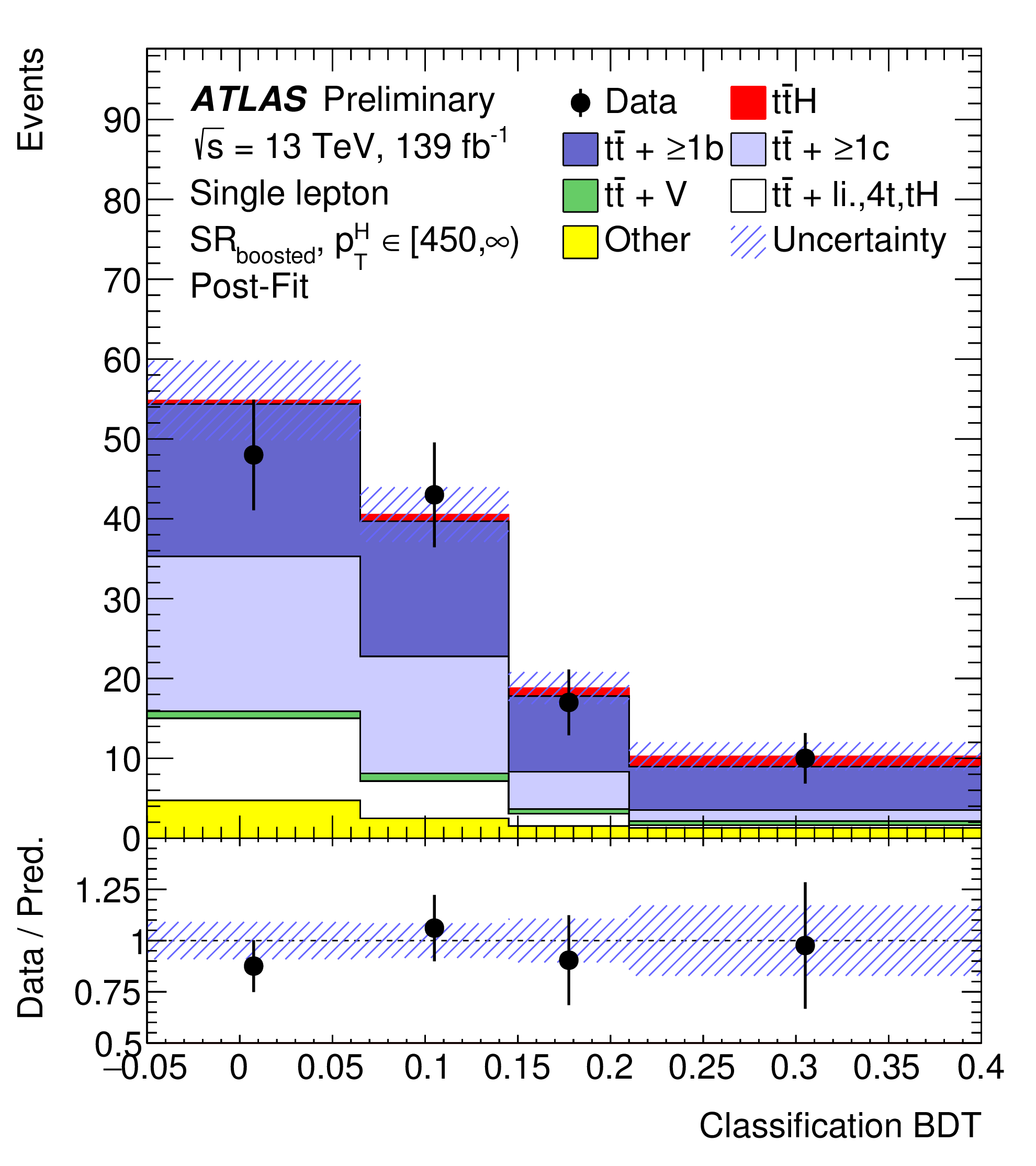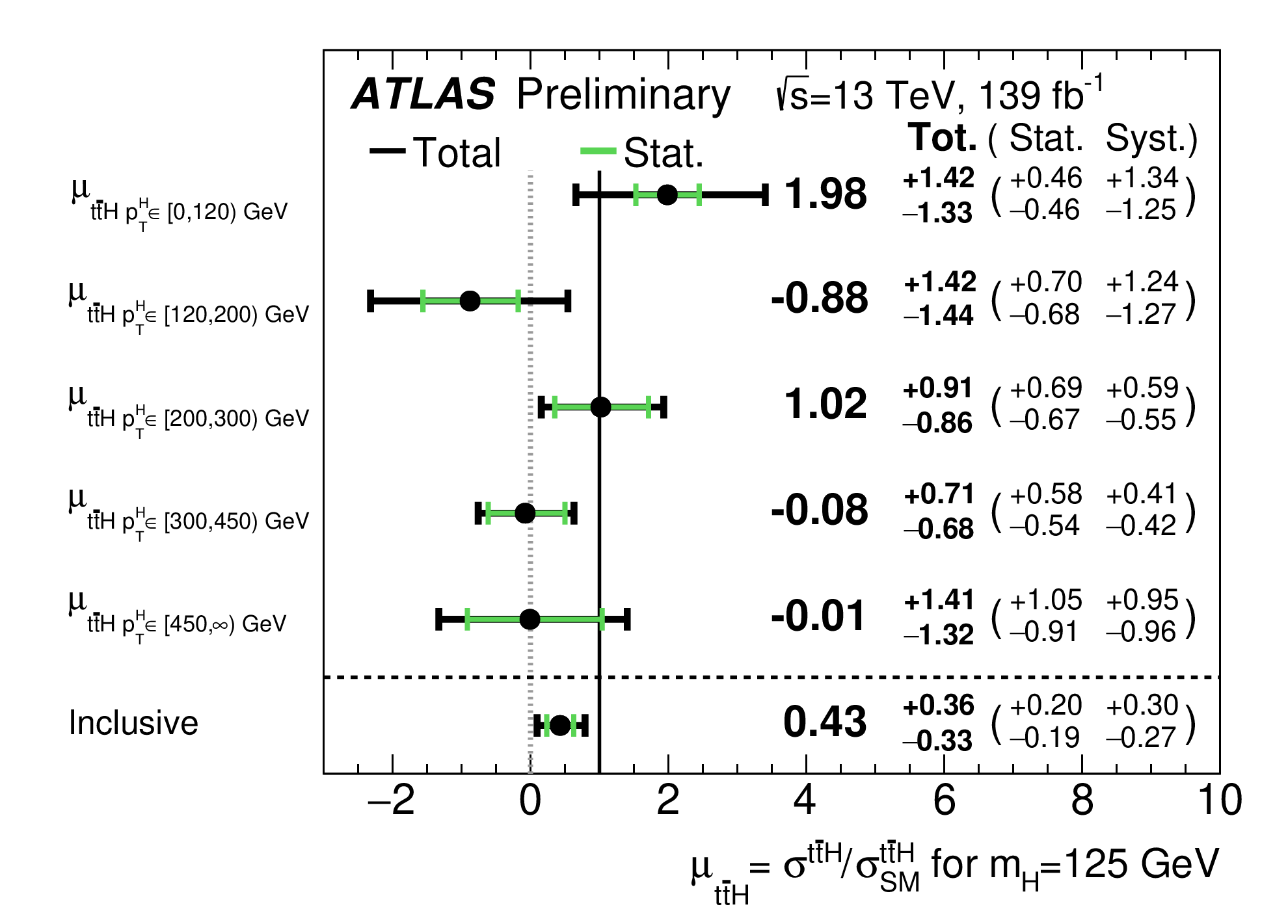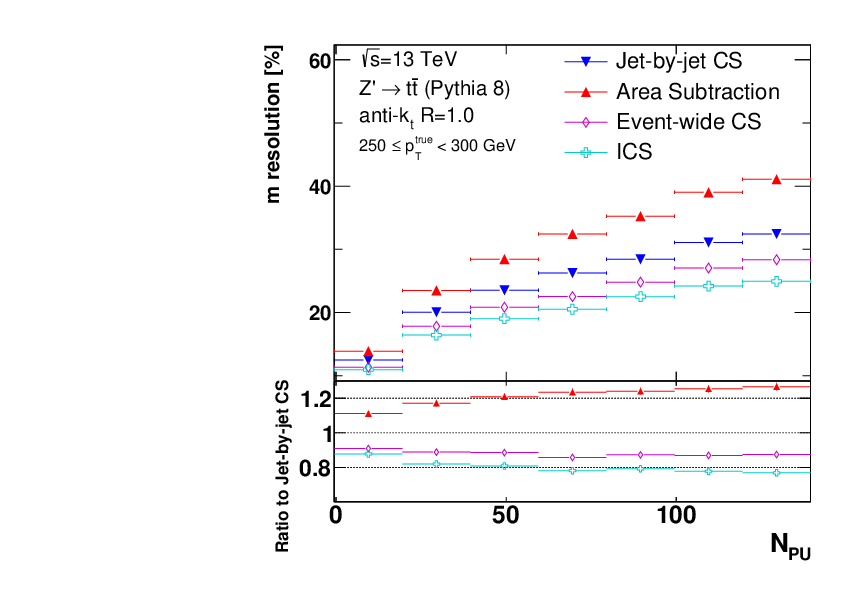
Top-Higgs coupling
MSCA-IF project
Project description
Duration: October 2018 - September 2020Researcher: Peter Berta
Funding: European Union’s Horizon 2020 research and innovation programme under the Marie Sklodowska-Curie grant agreement No 797520.
Description: In this project, the production rate of the Higgs boson in association with a pair of top quarks (ttH) in proton-proton collisions is investigated. This production rate is used to determine the top Yukawa coupling - the strength of the interaction between the Higgs boson and the top quark. The top Yukawa coupling is a fundamental observable, which is predicted in the Standard Model of elementary particles. A deviation of the measured top Yukawa coupling from the Standard Model prediction would be a proof of new phenomena beyond the Standard Model that could provide an answer to several open questions concerning the fundamental interactions of elementary particles.
The ttH events are targeted in the semileptonic decay of the pair of top quarks and the Higgs boson decay to a pair of bottom quarks in the phase phase with collimated decays of the Higgs boson (so called boosted phase space). The main goal of the project is to develop multivariate identification criteria using novel approaches to maximize the precision of the measurement in the boosted phase space.
The effect of the simultaneous proton-proton collisions (pileup) is investigated as well.
Results
The main project result is the improved precision of the cross-section measurement of the Higgs boson production in association with top-antitop pair (ttH) in the boosted phase space. The findings in this project allowed to measure the cross section in fiducial phase space defined at particle level for Higgs boson transverse momentum above 300 GeV. The measurement was published in Ref. [1]. Another project result is a new method to mitigate the effects from simultaneous proton-proton collisions (pileup) called Iterative Constituent Subtraction, see Ref. [2]. The new method significantly improves the reconstruction of jet observables in a high pileup environment which is essential for future LHC running.

Comparison between data and prediction for the BDT discriminant in the single-lepton SRs after the inclusive fit to the data [1].

Signal-strength measurements in the individual Higgs boson transverse momentum bins [1].

Dependence of jet mass resolution on number of pileup interactions for four pileup correction methods (Jet-by-jet CS, Area Subtraction, Event-wide CS, and ICS) [2].
Scientific publications
[1] ATLAS Collaboration: Measurement of the Higgs boson decaying to b-quarks produced in association with a top-quark pair in pp collisions at sqrt(s)=13 TeV with the ATLAS detector, ATLAS-CONF-2020-058
Open access at: https://cds.cern.ch/record/2743685
[2] P. Berta, L. Masetti, D. W. Miller, M. Spousta: Pileup and Underlying Event Mitigation with Iterative Constituent Subtraction, JHEP08 (2019) 175.
Open access at: https://link.springer.com/article/10.1007%2FJHEP08%282019%29175
[3] ATLAS Collaboration: Optimisation of large-radius jet reconstruction for the ATLAS detector in 13 TeV proton--proton collisions, arXiv:2009.04986. This preprint is already submitted to high impact journal EPJC.
Open access at: https://arxiv.org/abs/2009.04986
[4] A. Basan, P. Berta, L. Masetti, E. Vryonidou, S. Westhoff: Measuring the top energy asymmetry at the LHC: QCD and SMEFT interpretations, JHEP03 (2020) 184.
Open access at: https://link.springer.com/article/10.1007%2FJHEP03%282020%29184
Acknowledgement
This project has received funding from the European Union’s Horizon 2020 research and innovation programme under the Marie Sklodowska-Curie grant agreement No 797520.